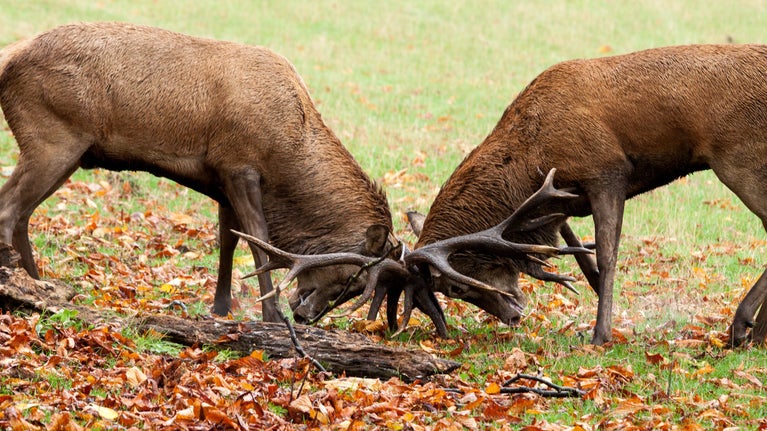
Explore the natural world
From learning how to identify trees to discovering the underwater world of rockpools, pick up some top tips to help you get closer to nature.

Situated along the Offa's Dyke path, Bradnor Hill is home to a SSSI Quarry and Kington Golf Course, the highest golf course in the country.
Despite currently being situated within Herefordshire, Bradnor Hill was likely Welsh land in the 8th Century AD. This is because the hill lies west of Offa’s Dyke, a linear earthwork which defined the border between Anglian Mercia and the Welsh kingdom of Powys, thought to be constructed under Anglo-Saxon king Offa between 757 and 796 AD. After the Norman Conquest and the subsequent downfall of the Earl of Herford in 1075, the town of Kington (and therefore Bradnor Hill) passed to the Crown.
In 1777, Bradnor Hill became of individual significance with the establishment of the once-famous Bradnor Hill racecourse, which remained in use until 1825. During the early 20th century, Bradnor Hill was owned by Major Benn and it was under his ownership that the Kington Golf Course, 'the highest golf course in England', was constructed and the site was bequeathed to the National Trust.

Bradnor Hill Quarry is located southeast of the hill's summit and has been designated a Site of Special Scientific Interest (SSSI) for its geological significance. This sandstone quarry is believed to have been worked during the 20th century and geological research shows that the rock formations date back to the Silurian period, approximately 417 million years ago.
Bryant's map of Bradnor Hill, produced in 1835, identifies a feature titled 'camp'. While various maps of Bradnor Hill have indicated the presence of standing stones, as well as stone circles and even megaliths, no other map identifies a 'camp' and no evidence has been found for any planned settlements. Although initially believed to be an iron age feature, it is possible that the ‘camp’ was actually the site of the famous Bradnor racecourse, which had been out of use for a decade by the time of Bryant’s map.
Bradnor Hill may have some military history, with metal detection around an area known as the ‘Old Butts’ recovering 30 lead bullets, used between 1853 and 1867. The 1st Administrative Battalion, Herefordshire and Radnorshire Rifle Volunteers was known to have a summer training camp based in Kington in the 1860s – could the Old Butts potentially be the remains of this training camp?

The landscape at Bradnor Hill is predominantly made up of grassland, with bracken and gorse being prevalent throughout the site. Gorse provides protection, cover, and refuge for a range of birds and mammals and is a valuable nectar source for many invertebrates. Birds such as skylarks and wrens can be spotted on the hill, foraging or nesting in the spiny branches of the bracken and gorse. The hill also provides a habitat for butterflies, bees, spiders and several reptilian species, including slow-worms and adders.

From learning how to identify trees to discovering the underwater world of rockpools, pick up some top tips to help you get closer to nature.
Discover the 7 countryside places cared for by the National Trust in Herefordshire.
